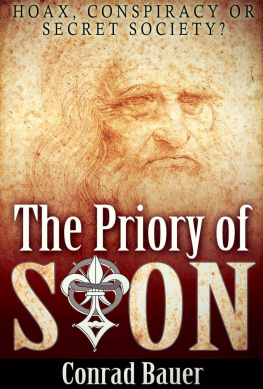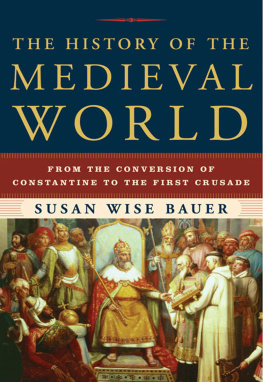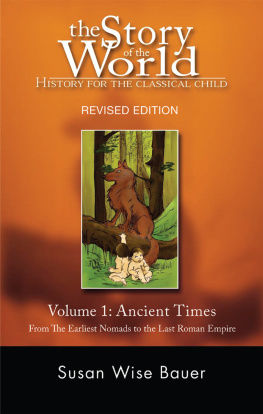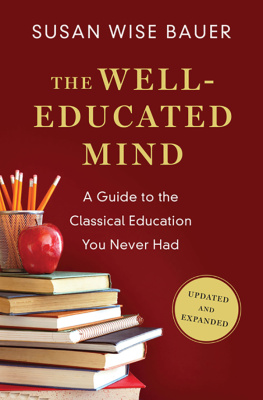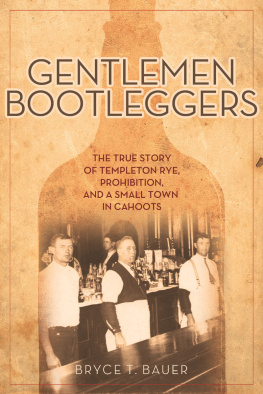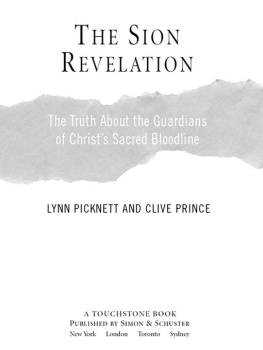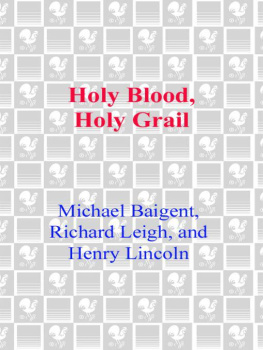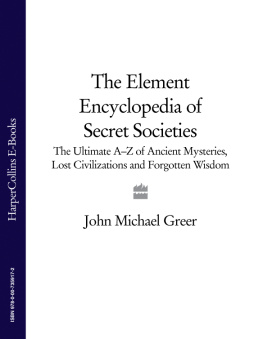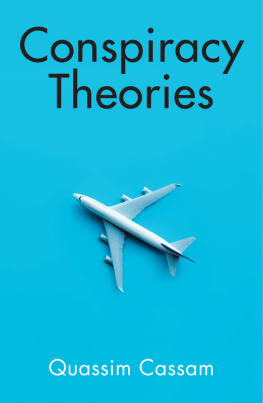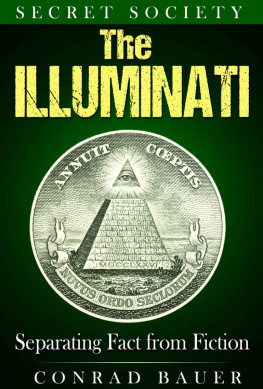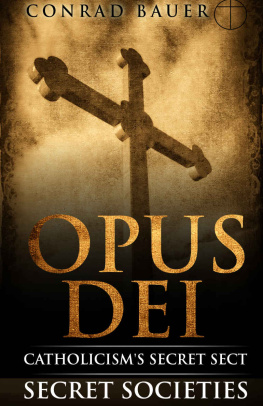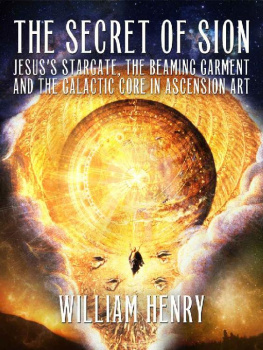Bauer - The Priory of Sion: Hoax, Conspiracy, or Secret Society?
Here you can read online Bauer - The Priory of Sion: Hoax, Conspiracy, or Secret Society? full text of the book (entire story) in english for free. Download pdf and epub, get meaning, cover and reviews about this ebook. year: 2016, publisher: Maplewood Publishing, genre: Religion. Description of the work, (preface) as well as reviews are available. Best literature library LitArk.com created for fans of good reading and offers a wide selection of genres:
Romance novel
Science fiction
Adventure
Detective
Science
History
Home and family
Prose
Art
Politics
Computer
Non-fiction
Religion
Business
Children
Humor
Choose a favorite category and find really read worthwhile books. Enjoy immersion in the world of imagination, feel the emotions of the characters or learn something new for yourself, make an fascinating discovery.
The Priory of Sion: Hoax, Conspiracy, or Secret Society?: summary, description and annotation
We offer to read an annotation, description, summary or preface (depends on what the author of the book "The Priory of Sion: Hoax, Conspiracy, or Secret Society?" wrote himself). If you haven't found the necessary information about the book — write in the comments, we will try to find it.
The Priory of Sion: Hoax, Conspiracy, or Secret Society? — read online for free the complete book (whole text) full work
Below is the text of the book, divided by pages. System saving the place of the last page read, allows you to conveniently read the book "The Priory of Sion: Hoax, Conspiracy, or Secret Society?" online for free, without having to search again every time where you left off. Put a bookmark, and you can go to the page where you finished reading at any time.
Font size:
Interval:
Bookmark:
The Priory of Sion
Hoax,
Conspiracy,
or Secret Society?
Conrad Bauer
Copyrights
All rights reserved. Conrad Bauer and Maplewood Publishing No part of this publication or the information in it may be quoted from or reproduced in any form by means such as printing, scanning, photocopying, or otherwise without prior written permission of the copyright holder.
Disclaimer and Terms of Use
Effort has been made to ensure that the information in this book is accurate and complete. However, the author and the publisher do not warrant the accuracy of the information, text, and graphics contained within the book due to the rapidly changing nature of science, research, known and unknown facts, and internet. The author and the publisher do not hold any responsibility for errors, omissions, or contrary interpretation of the subject matter herein. This book is presented solely for motivational and informational purposes only. The publisher and author of this book does not control or direct users actions and are not responsible for the information or content shared, harm and/or action of the book readers. The presentation of the information is without contract or any type of guarantee assurance.
References, if any, are provided for informational purposes only and do not constitute endorsement of any websites or other sources. Readers should be aware that the websites listed in this book, if any, may change.

Hoax, conspiracy, or secret society? That is the range of responses you might hear when raising the idea of the Priory of Sion. Ostensibly a clandestine order designed to disguise the truth about the children of Jesus Christ, the group have been labeled as either an elaborate concoction, or the most powerful secret society in the world. Are they real? What are they hiding? Where did they come from? What impact can they have on the world around us? These are the questions this book will hope to answer.
At the heart of the story of the Priory of Sion is the somewhat heretical notion that Jesus Christ the supposed son of God fathered children. Not only that, but that his bloodline survives to this day. If true, the idea has a huge impact on the very existence of Christianity, the worlds most popular religion. If the Priory as is believed are guarding the truth about such a matter, they then potentially control some of the most powerful information in the world. Think of it like an ideological atomic bomb, ticking away and ready to explode through the consciousness of the world.
Not only that, but the men allegedly chosen to guard these secrets rank as some of the greatest thinkers in human history. Isaac Newton, Nicholas Flamel, and Leonardo da Vinci have all been implicated in the order, though their involvement is debated. In fact, the entire existence of the order has been argued. Some suggest that, rather than a secret society, the Priory is in fact an elaborate hoax.
Others claim that these accusations are merely an attempt to disguise the truth. But what do we know for certain? Who exactly are the Priory of Sion?
One of the most important parts of this story is a battle. On one side is an American, pressed into defending himself. On the other side, three Englishmen stand convinced that they have been robbed and their ideas made to seem ridiculous. It is as though their honor has been sullied. They demand satisfaction. Each side is spending hundreds of thousands of dollars to face off against the other and it will not be settled until one side emerges victorious. But rather than some medieval fist fight or Victorian duel, this is a very recent battle. Though the history of the Priory of Sion is said to stretch back for thousands of years, this fight was fought after the turn of the second millennium. The venue is the Royal Courts of Justice in a part of London known as the Strand. The date is 2006.
This is where we will start. These days, it is impossible to discuss the Priory of Sion without mentioning a number of books. These books vary in popularity, from an international bestseller which made its author millions, through to a supposedly academic work which defied expectations and left a print on the world, and finally, an obscure French text, one which many people have credited with starting this entire affair. Appropriately enough for a story that may or may not be true, the publishing of books is inextricably linked to the Priory in every single respect. As we shall see, the writing, the reading, and the impact of these texts is essential to the story.
Of these books, two were written by the men who stood opposed to one another in the Strand. On one side was Dan Brown, writer of The Da Vinci Code , and the man often credited with turning the Priory of Sion into a global concern. Condemned by the Church, ridiculed by critics, his work has nevertheless proved to be a success beyond any comprehension. For the university professor, it has become a rich industry. As someone who teaches other to write, there are few people in the world better placed to tell others how to make money from a story. But how that story came to be is the entire predicament of the court case.
On the other side of the courtroom stand two men and their team of lawyers. Richard Leigh, hailing from New Jersey, and Michael Baigent, hailing from New Zealand. They glower at Dan Brown (who, strangely enough, hails from New Hampshire) from the other side of Court 61. Dan Brown is the defendant and the other two men have accused him of plagiarism. Brown, they say, not only stole their ideas, but presented them to the world in a way which discredited the work they had done. Baigent and Leigh are better known to the world as the authors of The Holy Blood and the Holy Grail . As well as being one of the most popular pieces of writing ever created on the subject of the Holy Grail, their book brings the idea of the Priory of Sion to an English-speaking audience. As we will discover soon, their work was wildly successful and few writers have come as close to delivering as ground-breaking, as controversial, and as profitable a take on religion in the last three centuries.
And so both sides of the courtroom are inhabited by writers. On this day, a verdict is to be reached which will lend credence to (or demolish the credibility of) an idea which is said to date back almost 2,000 years. At the heart of the matter, with the judge set to rule, is the purported existence of the Priory of Sion. Through the works of both sides of the argument, the Priorys name has reached more ears than anyone ever thought possible. While Brown has managed to dominate the bestseller charts in the world of fiction, Baigent and Leigh (as well as a third author who is not present, but who will be touched upon soon) created massive waves in the world of non-fiction. Between them, they have dominated both sides of the bestseller charts.
That is one of the key underlying aspects of the case and, by extension, the existence of the Priory of Sion itself. There is a huge amount of money to be made in publishing these ideas. Whether that is because they are dangerous, because they are revelatory, or because they are entertaining, is never really made clear. But, simply because the case ever came to court, there is money to be made through publishing works on the Priory of Sion. And, with court cases such as these, there is also a huge amount of money to be lost.
So what exactly were the duo of Baigent and Leigh claiming in Courtroom 61? Their case was not as simple as run-of-the-mill plagiarism. Typically, in plagiarism cases, the prosecution must prove that the defendant took their idea and made a profit on it, without attributing credit or sharing in the revenue. This has been done countless times in the past and, in the world of publishing (and the media at large) it is not uncommon. But this particular case was slightly different.
Font size:
Interval:
Bookmark:
Similar books «The Priory of Sion: Hoax, Conspiracy, or Secret Society?»
Look at similar books to The Priory of Sion: Hoax, Conspiracy, or Secret Society?. We have selected literature similar in name and meaning in the hope of providing readers with more options to find new, interesting, not yet read works.
Discussion, reviews of the book The Priory of Sion: Hoax, Conspiracy, or Secret Society? and just readers' own opinions. Leave your comments, write what you think about the work, its meaning or the main characters. Specify what exactly you liked and what you didn't like, and why you think so.

